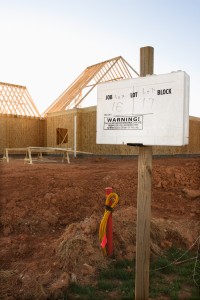Can the City Eliminate Your Roadway Access?
 Article Two, Section 17 of the Arizona Constitution provides that “no private property shall be taken or damaged for public or private use without just compensation having first been made.” But what does it mean, legally speaking, for a government to take or damage property? It is this question that the Arizona Supreme Court sought to answer in a recent decision captioned City of Phoenix v. Garretson, 234 Ariz. 332, 322 P.3d 149 (2014).
Article Two, Section 17 of the Arizona Constitution provides that “no private property shall be taken or damaged for public or private use without just compensation having first been made.” But what does it mean, legally speaking, for a government to take or damage property? It is this question that the Arizona Supreme Court sought to answer in a recent decision captioned City of Phoenix v. Garretson, 234 Ariz. 332, 322 P.3d 149 (2014).
Unlike typical eminent domain cases, the City of Phoenix did not, at any point in time, permanently take private property. Rather, the City eliminated the property owner’s preexisting access to a major roadway. The Arizona Supreme Court was therefore faced with the interesting question of whether a private property owner may be entitled to compensation if the government, in the exercise of its police power, eliminates an owner’s established access to an abutting street.
The applicable facts establish that John Garretson is the owner of a parcel of land in downtown Phoenix that abuts Jefferson Street to the north, First Street to the east, Madison Street to the south, and another parcel of land to the west. In 2006, as part of its construction of a light rail through downtown Phoenix, the City erected a permanent concrete barrier between the south side of the light rail tracks and Mr. Garretson’s property. The barrier blocked two driveways that provided vehicular access from Mr. Garretson’s property to Jefferson Street. Garretson at __, 322 P.3d at 151. Mr. Garretson therefore sought damages from the City for his permanent lack of access to Jefferson Street, even though his property maintained access via Madison Street.
Looking back to a case it decided in 1960, State ex rel. Morrison v. Thelberg, 87 Ariz. 318, 350, P.2d 988 (1960), the Court acknowledged its previous holding that the state must compensate landowners when a right of access is “taken away or destroyed or substantially impaired.” However, the Court also considered the case of Rayburn v. State ex el. Wiley, 93 Ariz. 54, 378 P.2d 496 (1963), in which it held that a property owner is not entitled to compensation simply as a result of changes in the type, features or flow of traffic, or the construction of a new road, which ultimately reduce the owner’s property value. The Court therefore seized on the difference between government action that “destroys or substantially impairs a preexisting right of access,” and action by which the government alters the nature or characterization of the old or new roadway. Garretson at __, 322 P.3d at 153-154.
After acknowledging this distinction, the Court turned back to the facts of the instant case, noting that “the City completely eliminated Garretson’s preexisting access to Jefferson Street.” Mr. Garretson was therefore left with “no means of ingress or egress to that street or any replacement roadway in that location.” Id. at __, 322 P.3d at 154. Deeming this to be a destruction of access, the Court found that Mr. Garretson maintained a valid claim for compensation under the Arizona Constitution.
Based on the Court’s holding, the Garretson case stands for the proposition that a property owner is entitled to compensation if the government eliminates or substantially impairs an owner’s access to an abutting road. Mr. Garretson is therefore entitled to damages in an amount reflecting the decreased fair market value of his property as a result of the complete loss of access to Jefferson Street.
Tags: legal, Legal Articles